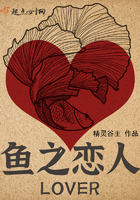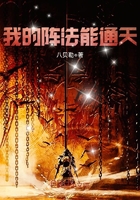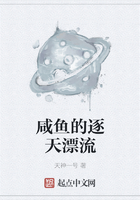The heart lay with its base toward the left, its apex toward the right, reaching the lower border of the 4th rib, under the right mamma. The vena cava was on the left side and passed into the pulmonary cavity of the heart, which was also on the left side, the aorta and systemic ventricle being on the right. The left splenic vein was lying on the superior vena cava, the liver under the left ribs, and the spleen on the right side underneath the heart. The esophagus was on the right of the aorta, and the location of the two ends of the stomach was reversed; the sigmoid flexure was on the right side. Davis describes a similar instance in a man.
Herrick mentions transposition of viscera in a man of twenty-five. Barbieux cites a case of transposition of viscera in a man who was wounded in a duel. The liver was to the left and the spleen and heart to the right etc. Albers, Baron, Beclard, Boyer, Bull, Mackensie, Hutchinson, Hunt, Murray, Dareste, Curran, Duchesne, Musser, Sabatier, Shrady, Vulpian, Wilson, and Wehn are among others reporting instances of transposition and inversion of the viscera.
Congenital extroversion or eventration is the result of some congenital deficiency in the abdominal wall; instances are not uncommon, and some patients live as long as do cases of umbilical hernia proper. Ramsey speaks of entire want of development of the abdominal parietes. Robertson, Rizzoli, Tait, Hamilton, Brodie, Denis, ****ie, Goyrand, and many others mention extroversion of viscera from parietal defects. The different forms of hernia will be considered in another chapter.
There seem to be no authentic cases of complete absence of the kidney except in the lowest grades of monstrosities. Becker, Blasius, Rhodius, Baillie, Portal, Sandifort, Meckel, Schenck, and Stoll are among the older writers who have observed the absence of one kidney. In a recent paper Ballowitz has collected 213 cases, from which the following extract has been made by the British Medical Journal:--"Ballowitz (Virchow's Archiv, August 5, 1895) has collected as far as possible all the recorded cases of congenital absence of one kidney. Excluding cases of fused kidney and of partial atrophy of one kidney, he finds 213 cases of complete absence of one kidney, upon which he bases the following conclusions: Such deficiency occurs almost twice as often in males as in females, a fact, however, which may be partly accounted for by the greater frequency of necropsies on males. As to age, 23 occurred in the fetus or newly born, most having some other congenital deformity, especially imperforate anus; the rest were about evenly distributed up to seventy years of age, after which only seven cases occurred. Taking all cases together, the deficiency is more common on the left than on the right side; but while in males the left kidney is far more commonly absent than the right, in females the two sides show the defect equally. The renal vessels were generally absent, as also the ureter, on the abnormal side (the latter in all except 15 cases); the suprarenal was missing in 31 cases. The solitary kidney was almost always normal in shape and position, but much enlarged. Microscopically the enlargement would seem to be due rather to hyperplasia than to hypertrophy. The bladder, except for absence of the opening of one ureter, was generally normal. In a large number of cases there were associated deformities of the organs of generation, especially of the female organs, and these were almost invariably on the side of the renal defect; they affected the conducting portion much more than the glandular portion--that is, uterus, vagina, and Fallopian tubes in the female, and vas deferens or vesiculae seminales in the male, rather than the ovaries or testicles. Finally, he points out the practical bearing of the subject--for example, the probability of calculus causing sudden suppression of urine in such cases--and also the danger of surgical interference, and suggests the possibility of diagnosing the condition by ascertaining the absence of the opening of one ureter in the bladder by means of the cystoscope, and also the likelihood of its occurring where any abnormality of the genital organs is found, especially if this be unilateral."Green reports the case of a female child in which the right kidney and right Fallopian tube and ovary were absent without any rudimentary structures in their place. Guiteras and Riesman have noted the absence of the right kidney, right ureter, and right adrenal in an old woman who had died of chronic nephritis. The left kidney although cirrhotic was very much enlarged.
Tompsett describes a necropsy made on a coolie child of nearly twelve months, in which it was seen that in the place of a kidney there were two left organs connected at the apices by a prolongation of the cortical substance of each; the child had died of neglected malarial fever. Sandifort speaks of a case of double kidneys and double ureters, and cases of supernumerary kidney are not uncommon, generally being segmentation of one of the normal kidneys. Rayer has seen three kidneys united and formed like a horseshoe. We are quite familiar with the ordinary "horseshoe kidney," in which two normal kidneys are connected.
There are several forms of displacement of the kidneys, the most common being the "floating kidney," which is sometimes successfully removed or fixed; Rayer has made an extensive study of this anomaly.
The kidney may be displaced to the pelvis, and Guinard quotes an instance in which the left kidney was situated in the pelvis, to the left of the rectum and back of the bladder. The ureter of the left side was very short. The left renal artery came from the bifurcation of the aorta and the primitive iliacs. The right kidney was situated normally, and received from the aorta two arteries, whose volume did not surpass the two arteries supplying the left suprarenal capsule, which was in its ordinary place.















